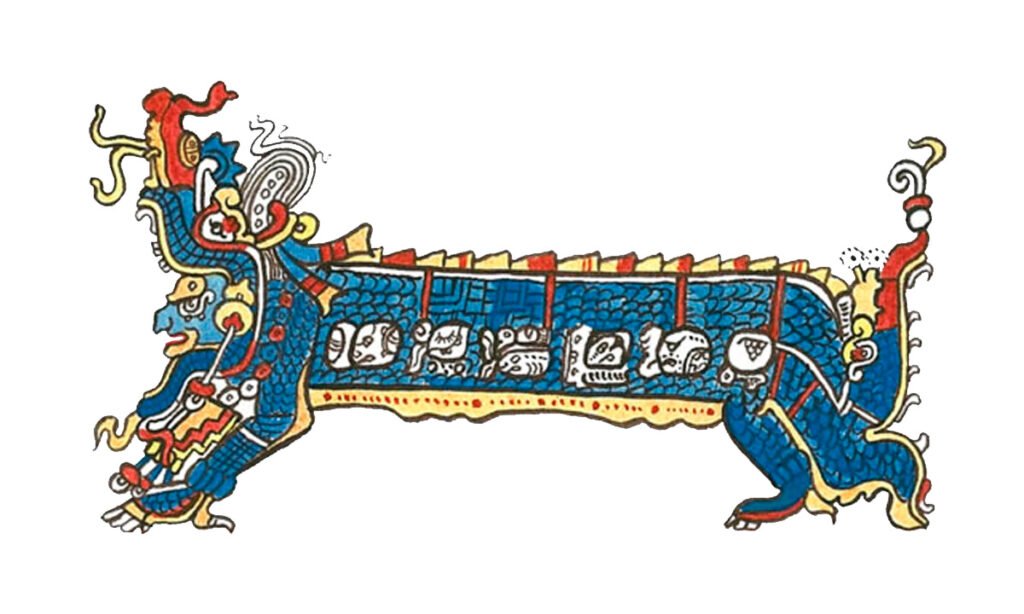In this article, we will delve into the fascinating mythology surrounding Itzamna, the ancient Maya god believed to be a creator deity and the ruler of the sky. Itzamna is an important figure in the pantheon of Maya deities, associated with creation, time, and wisdom. Let’s explore the life and role of this mythical being in depth.
Who is Itzamna?
Itzamna, often referred to as “god D,” is a significant deity in Maya mythology. He is closely associated with creation, time, and the sky. Itzamna is depicted as a bird-like deity with attributes of both a bird and a human being. He is often shown with bird-like wings and a beak-like nose. In ancient Maya books and ceramic scenes, Itzamna is commonly depicted as an aged and wise figure, highlighting his association with wisdom and knowledge.
The Meaning of Itzamna
The name Itzamna has a deep but somewhat mysterious meaning in Maya culture. While the exact interpretation is not fully understood, some scholars suggest that it may be related to secretions and sorcery. This connection reflects the importance of Itzamna in the realm of mystical and magical powers. Itzamna’s association with wisdom and knowledge further emphasizes his role as a divine being with supernatural powers.
Itzamna and Other Gods
Early colonial reports from the Spanish conquest of the Maya region connect Itzamna with other gods such as Hunab Ku, Kinich Ahau, and Yaxcocahmut. Itzamna is often described as the first priest and the inventor of writing. This association with writing is significant as it highlights the god’s role in preserving knowledge and history. Itzamna’s interaction with other gods suggests his central role in the Maya pantheon and their cosmology.
Itzamna’s Role in Creation
Itzamna is considered the creator of humanity and the father of the Bacab, a group of four deities associated with the Earth and the transformation of seasons. The Bacab are often depicted as supporting the four corners of the world, symbolizing stability and balance. Itzamna’s role as a creator extends beyond humanity to the shaping of the world and the heavens. He is believed to have played a crucial role in the formation and organization of the cosmos.
Depictions of Itzamna
In the Dresden Codex, one of the surviving Maya books, Itzamna is depicted as a high priest and ruler, seated on his celestial throne. The image showcases his authority and power as a divine being. Itzamna is often associated with the Earth, represented by a two-headed caiman, a crocodile-like creature. This connection symbolizes his close relationship with the natural world. Additionally, he can also be considered an aged form of the tonsured maize god, and is sometimes shown together with the Bacab, further emphasizing his connection to creation and earthly forces.
Itzamna and the Principal Bird Deity
Itzamna is closely associated with the Principal Bird Deity, a transformative shape that symbolizes time and the cyclic nature of existence. This bird-like figure is often depicted holding a bicephalous snake, which represents the cyclical nature of time and life. The Principal Bird Deity signifies the eternal cycle of creation and destruction, highlighting Itzamna’s role in the ongoing process of cosmic renewal and transformation.
Itzamna’s Human Representatives
Itzamna is believed to have had human representatives in the form of various Maya kings who had Itzamnaaj as part of their names or royal titles. This suggests a deep connection between the rulers and the divine powers associated with Itzamna. The integration of Itzamna’s name into royal titles further emphasizes his significance in Maya society, where the rulers were considered divine representatives and patrons of their people.
Itzamna’s Role in Rulership
Ancient Maya art often depicts Itzamna bestowing rulership on a king in his bird avatar. This depiction highlights his role as a creator and a deity with power over governance and rulership. Itzamna’s association with rulership indicates his role in maintaining the cosmic order and ensuring the well-being and prosperity of the Maya civilization. As a wise and powerful deity, Itzamna served as a guide and protector of Maya kings.
Conclusion
Itzamna is a central figure in Maya mythology, associated with creation, time, rulership, and the Earth. His portrayal as the creator of humanity and his association with the Bacab and other gods further showcase his significance in the Maya pantheon. Itzamna’s role as a divine figure connects the physical and spiritual realms, reflecting the Maya people’s deep reverence for the natural world and their gods. Through his wisdom and authority, Itzamna played a pivotal role in shaping Maya society and culture, leaving an enduring legacy in Mesoamerican history.
Additional Resources
- Maya Cosmos: Three Thousand Years on the Shaman’s Path by David Freidel, Linda Schele, and Joy Parker.
- The Gods and Symbols of Ancient Mexico and the Maya: An Illustrated Dictionary of Mesoamerican Religion by Mary Miller and Karl Taube.
- A Forest of Kings: The Untold Story of the Ancient Maya by Linda Schele and David Freidel.
- The Code of Kings: The Language of Seven Sacred Maya Temples and Tombs by Linda Schele and Peter Mathews.
